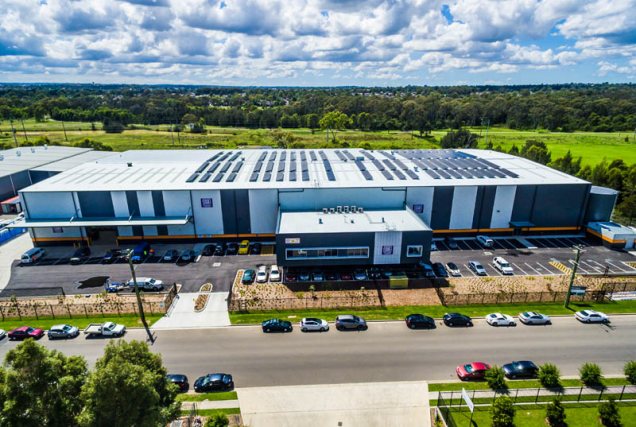
More solar energy for Foodbank | Image: LG
The Australian Federal Government is providing $1.2 million in funding to assist food rescue groups reduce their energy costs and boost their food storage capabilities.
The funding is being provided over two years under the Food Rescue Charities Program, the fulfilment of a Turnbull government re-election promise made last year.
2 million people seek food relief in Australia each year and 43,000 are turned away every month; some of that due to food rescue groups having insufficient resources to keep and distribute food.
While the food these groups receive may be “free”, collecting, storing and distributing it is a costly exercise – and one of those major expenses is electricity.
The groups to benefit from the first tranche of funding are:
- FareShare – $154,641 for installing solar power systems and to add a refrigerated van to its fleet to increase supply of rescued food.
- Foodbank Australia Limited – $272,727 for solar panel installations at its distribution centres in Queensland, New South Wales, Victoria, South Australia and Western Australia.
- Secondbite – $86,416 to boost its freezer storage capacity and to add a refrigerated vehicle to its operations.
- Oz Harvest Limited – $272,233 to build on its fleet of refrigerated vehicles and refrigeration systems.
Australia’s Hidden (And Shameful) Crises
Foodbank says hunger is a hidden crisis in Australia, with one in six people having experienced food insecurity in the last year. Hunger in Australia isn’t so much about the lack of availability of food, but more to do with waste of it and distribution issues.
The tragedy of empty bellies aside, according to the Federal Government food waste costs the Australian economy an estimated $20 billion a year – a crisis in itself – and says it is committed to reducing this waste by 50 per cent by 2030.
Organisations such as those above tackle the problem at both ends – helping companies save money by ensuring some of three million tonnes of food discarded by the commercial and industrial sector annually isn’t shipped to rot in landfill, and getting what is perfectly good food to those who really need it.
“Thanks to this new energy grant, Foodbank can focus its spending on ways of getting food to those in need. This will go a long way in reducing our warehouse costs and we’re excited to see whats next in the political discussion about food insecurity,” said FoodBank.
Foodbank has dabbled in solar energy before – in 2015, a 250kW system comprised of LG solar panels was installed on the roof of its New South Wales factory. At the time, it was the largest solar installation on a commercial building in the state.

 RSS - Posts
RSS - Posts



Speak Your Mind